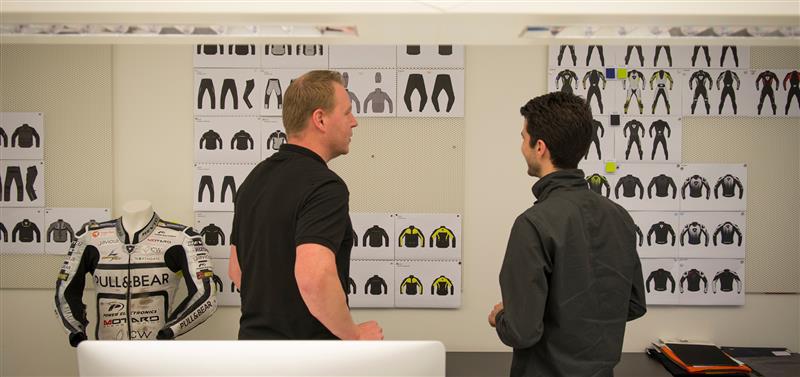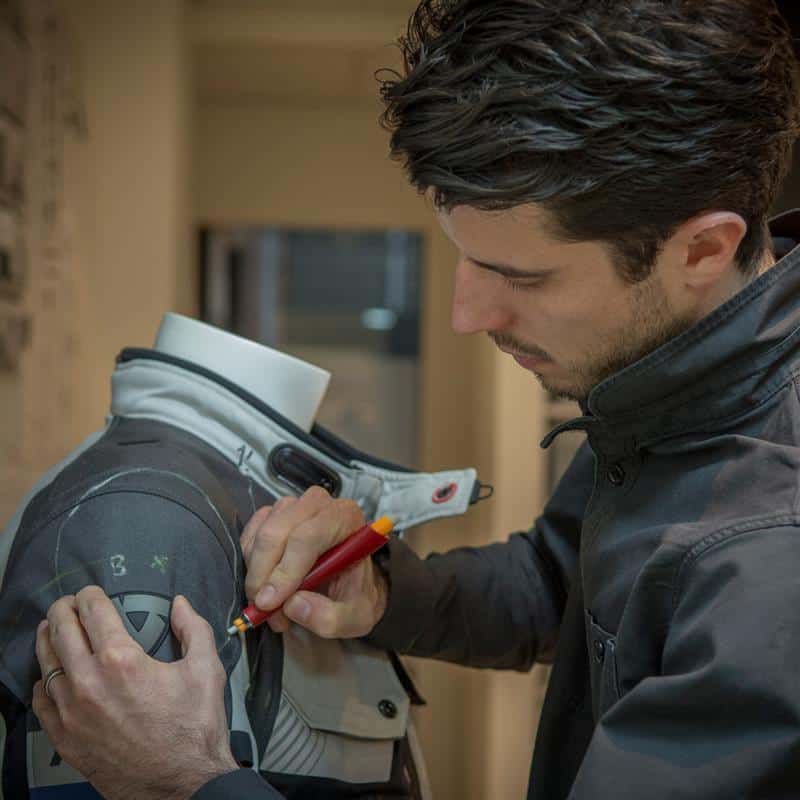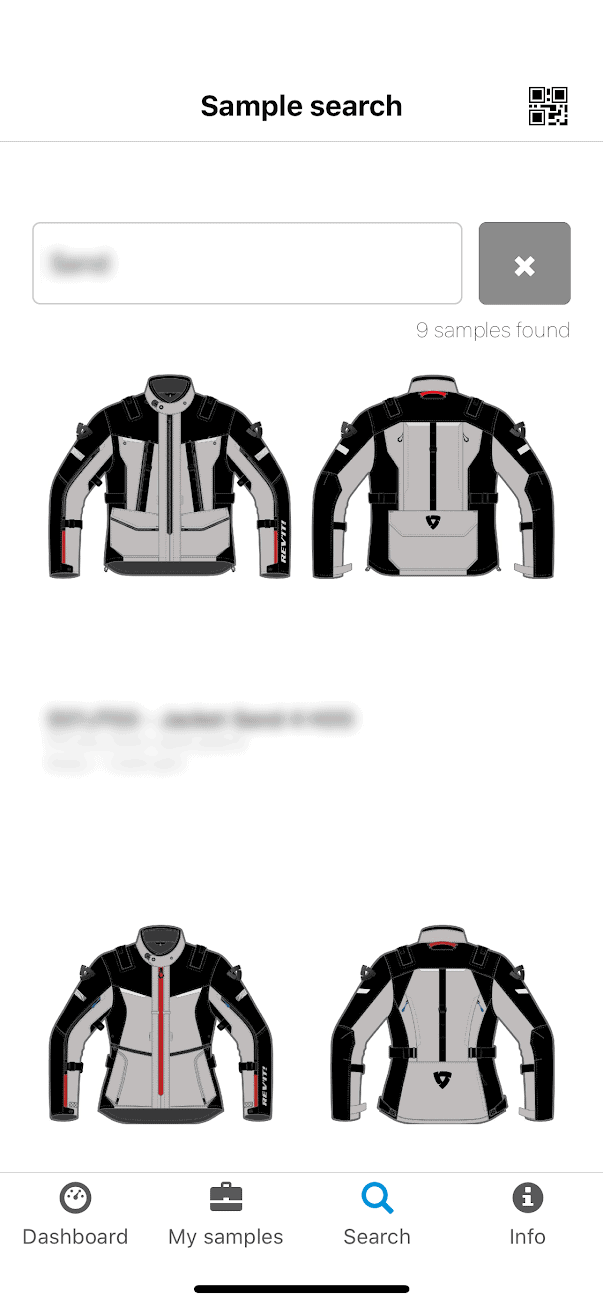Motorcycle gear, as outlandish as it seems, has similarities to both luxury fashion and dishwashers. Consider for a moment the product development process for both: from optimizing stitching to perfecting polymer sciences, motorcycle gear has elements of high-fashion combined with functional components that prevent bodily harm. Because of the complex nature of the gear, numerous design iterations are required to ensure proper fit and to provide essential safety in the event of a crash. In addition to a concern for safety, riders care about how they look. Whether a track day enthusiast or an urban commuter, aesthetics is critical when representing personal taste. This fact is not lost on REV’IT!, a leader in motorcycle clothing that pushes the limits of form and function, successfully catering to these styles while maintaining critical safety features. Their design process is driven by their core values, which illustrate their commitment to their craft: design, performance, and innovation.

Given the challenges of combining form and function, there were few off-the-shelf product data management (PDM) solutions that provided the specific capabilities needed to create motorcycle gear. Randy Vos, Supply Chain and IT Director at REV’IT!, turned to low-code to custom-build a new PDM solution to improve their product development process. Working with Solvos, a Mendix solution provider, Vos set out to provide a system that would meet the strict requirements this process demanded.
Merging Form and Function
Creating any piece of apparel requires strategic planning, and ideally, the design process will be seamless from start to finish. For most clothing, sliding across the asphalt at 60 mph (96 km/h) is not a design consideration, but this situation can mean life or death for motorcycle riders. Vos explains that “there are good product development management tools for fashion… if you want to make very technical products such as a dishwasher or an airplane, there are also fantastic products for that.”
Part of the REV’IT! design process includes pricing for the various items supplied from vendors around the world. REV’IT!’s previous pricing model was managed in complicated, home-built Excel files that were not centrally managed. “Every product developer had their copy of this pricing file on their desktop,” Vos explains, leading to inconsistencies and errors that made product development challenging to manage.
In addition to the complexities of their pricing calculations, the REV’IT! team provides feedback to their manufacturers to ensure that their designs were manufactured properly. From iPads to pen and paper, REV’IT!’s designers were taking different approaches to provide feedback on the samples they receive. This created unnecessary confusion throughout the feedback process, prolonged the release of new products, and frustrated their designers. The REV’IT! design team found these disperse methods to be too complicated to use efficiently, and Vos recognized the need to think outside the box to solve this issue. Even though this should be an engaging part of developing new products, the team despised it.

Hand-Crafting a PDM Solution
Vos previously worked at a trucking company in charge of operations and IT. With any transportation company, cutting overhead and unnecessary costs is critical to success. This ideology continually forced Vos and his team to push their out-of-the-box system to the limit. They frequently ran into roadblocks, and justifiably became frustrated when their tools were unable to accomplish their goals. Vos began searching for a better solution. After discovering Mendix, he realized that a custom-built transportation management system (TMS) may be their best option despite facing resource and technical capacity constraints. “The ease of use of the modeler and the speed and flexibility of development using low-code” triggered the adoption of Mendix, explains Vos.
Now that Vos had experience with low-code, he knew the tools that were required to build REV’IT!’s PDM solution. Working with Solvos, Vos’ team consisting of himself and a business analyst took just six months to build their PDM solution from the ground up without having to hire additional developers. Vos explains that Mendix has enabled them to “translate the business workflow and a large number of visual components” while pulling in key REV’IT! designers, product developers, and managers for input when required. Approaching the project with agile in mind, Vos’ team had weekly calls with product owners across REV’IT! to understand the intricacies of their work. Throughout the six-month development process, the team deployed updates to their production environment as frequently as every month and expanded functionality with each release. He explains that REV’IT! is “not able to free up five or 10 people to work on this full time.” By leveraging low-code and implementing the agile development process for this massive undertaking, Vos was able to deliver a solution that enables a more efficient process the team enjoys using.
Redesigning the Design Process
Their PDM solution guides a nearly two-year design process for each piece of gear REV’IT! creates. This requires complex pricing calculations from vendors across the world, hosting and displaying images that help guide manufacturing, and functionality which REV’IT! refers to ‘commenting.’
The REV’IT! designers start their initial design in Adobe Illustrator. After the initial design is completed, the REV’IT! product developers use the PDM solution to create a technical file that contains detailed instructions for the manufacturers. The manufacturers use the instructions to produce samples for the designers and developers to evaluate. A critical but simple step in the process occurs once they receive these samples back from the manufacturers. By use of their computers or mobile devices, the REV’IT! team is now able to comment, annotate, and markup their feedback based on the samples received. After comments have been added to the samples, new spec packs are generated for the next sample.

The custom-built PDM system that Vos oversaw is providing significant time savings during a critical step in the REV’IT! product development process. He has estimated that as much as 25% of their designers’ time is given back to them as a direct result of the app ecosystem they built. Their designers are now free to focus on designing products, and not worrying about which Excel file is up-to-date. Vos explains that commenting has “turned from one of the most annoying tasks in the development process to one of the easiest.” This new perception is a huge win, as it has caused their designers to think more positively about their design process. In addition to significant time savings, their new solution is preventing costly errors. Dozens of images go back and forth between their manufacturers and designers. A simple formatting mistake on their annotations can lead to bad samples, which drives up costs and pushes development timelines back.
Revving Towards the Future
Despite the complexities faced with designing motorcycle gear and the lack of off-the-shelf solutions, Vos and his team were able to work directly with REV’IT!’s designers and product developers on revolutionizing a previously error-prone process. Having worked with REV’IT! for over 5 years, Vos and Solvos have graduated from developing a single application to delivering 10 applications that are delivering value for REV’IT!. With a valuable partner at his side, Vos is providing a more pleasant experience for critical functions in his business, and continues to iterate on their customized PDM solution as REV’IT! evolves.

